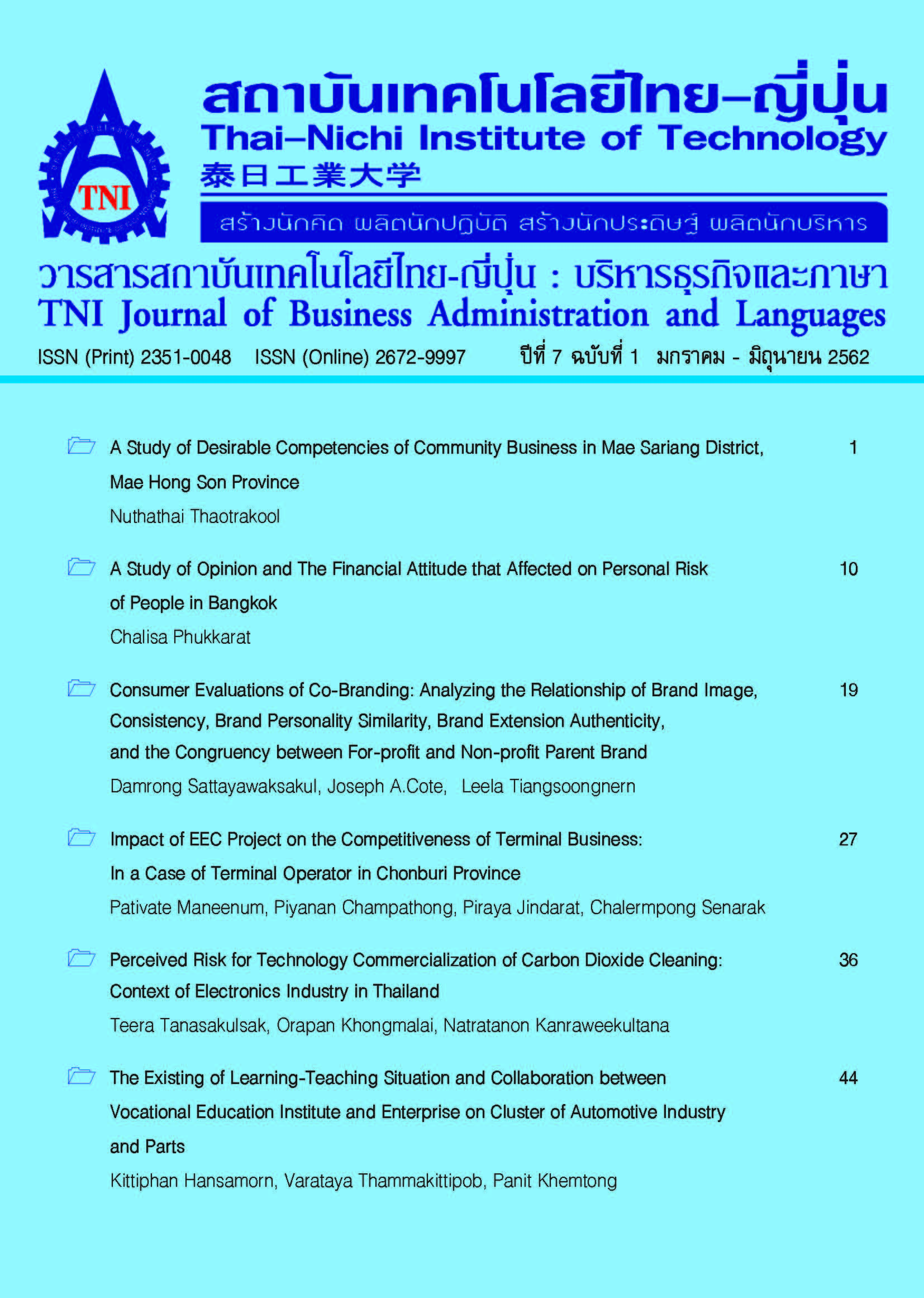The Mechanism of Efficiency Comparison for Digital Media Engagement
Main Article Content
Abstract
At present, a traditional media for consumer is replaced by a digital media. The digital media is increasingly popular. A growth of internet media is the primary factor that makes this new media be a primary channel for consumers’ communication on website. This research paper aims at examining a mechanism of efficiency comparison of consumer’s interest in digital media on social media. The analysis is performed by a tool to measure the efficiency of the content on the website. The most efficiency of the communication that allows the interaction between consumer and brand is a two-way digital communication that engaging with social issues. The frequency of content on the digital media seems not to be the case.
Article Details
Article Accepting Policy
The editorial board of Thai-Nichi Institute of Technology is pleased to receive articles from lecturers and experts in the fields of business administration, languages, engineering and technology written in Thai or English. The academic work submitted for publication must not be published in any other publication before and must not be under consideration of other journal submissions. Therefore, those interested in participating in the dissemination of work and knowledge can submit their article to the editorial board for further submission to the screening committee to consider publishing in the journal. The articles that can be published include solely research articles. Interested persons can prepare their articles by reviewing recommendations for article authors.
Copyright infringement is solely the responsibility of the author(s) of the article. Articles that have been published must be screened and reviewed for quality from qualified experts approved by the editorial board.
The text that appears within each article published in this research journal is a personal opinion of each author, nothing related to Thai-Nichi Institute of Technology, and other faculty members in the institution in any way. Responsibilities and accuracy for the content of each article are owned by each author. If there is any mistake, each author will be responsible for his/her own article(s).
The editorial board reserves the right not to bring any content, views or comments of articles in the Journal of Thai-Nichi Institute of Technology to publish before receiving permission from the authorized author(s) in writing. The published work is the copyright of the Journal of Thai-Nichi Institute of Technology.
References
P. Mell and T. Grance, “The NIST Definition of Cloud Computing,” National Institute of Standards and Technology, NIST Special Publication (SP) 800-145, Sep. 2011.
Electronic Transactions Development Agency’s, “Thailand Internet User Profile 2018, ETDA, 2018. [Online]. Available: https://www.etda.or.th/ publishing-detail/thailand-internet-user-profile-2018.html, [Accessed: 05-Mar-2019].
GlobalWebIndex’s, “quarterly report on the latest trends in social networking,” GlobalWebIndex, 2019. [Online]. Available: https://www.globalwebindex.net/reports. [Accessed: 31-Jan-2017].
Lyons G., What are social behavioural segments? (2016). GlobalWebIndex, 2016. [Online]. Available: https://knowledge.globalwebindex.net/hc/en-us/articles/202799632- What-are-socialbehavioural-segments-, [Accessed: 29-Jan-2017].
W. Fang, “Using Google Analytics for Improving Library Website Content and Design: A Case Study,” Library Philosophy and Practice, vol. 1, no. 1, pp. 1–17, Nov. 2006.
L. Hasan, A. Morris, and S. Probets, “Using Google Analytics to Evaluate the Usability of E-Commerce Sites,” in Human Centered Design, 2009, pp. 697–706.
B. Poolsawas, “The Evaluation of Effectiveness on Mobile Application Banner,” presented at the The 8th National Conference on Computing and Information Technology (NCCIT2015), Arnoma Hotel Bangkok, Bangkok, 2015, vol. 11.
G. CROITORU, C. V. NIŢU, and O. NIŢU, “How to Monitor, Measure and Calculate Social Media ROI: EDS Chulalongkorn University,” Valahian Journal of Economic Studies, vol. 5, no. 3, pp. 57–62, 2014.


